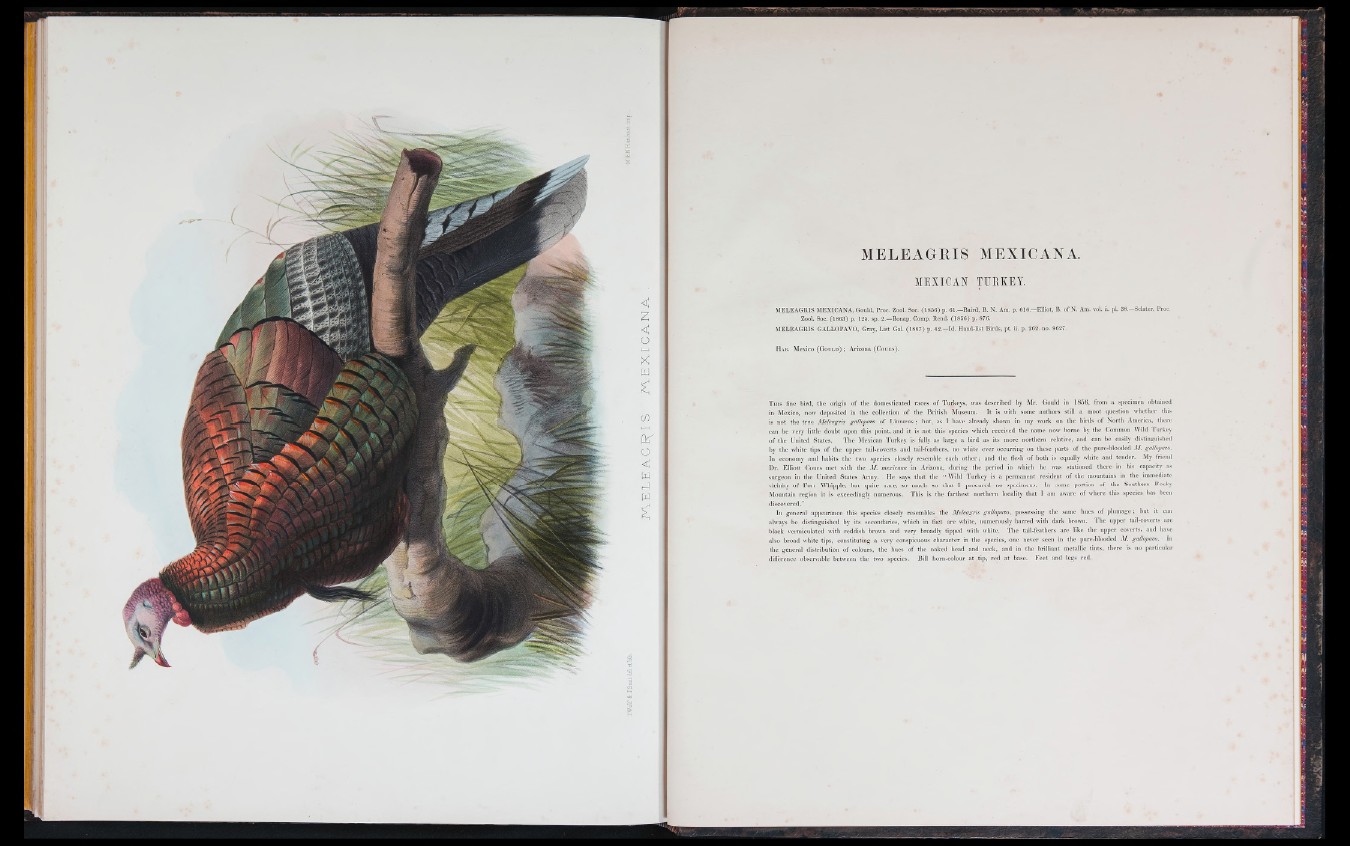
MELEAGRIS MEXICANA.
M E X I C A N T U R K E Y .
MELEAGRIS MEXICANA, Gould, Proc. Zoo'l. Sog. (18 5 6 ) p. 61.—Baird, B. N. Am. p. 616.—Elliot, B. of N. Am. vol. ii. pi. 38.—Sclater, Proc.
Zool. Sod. (1863) p. 125. sp. 2.—Bonap. Comp. Rend. (18 5 6 ) p. 876.
MELEAGRIS GALLOPAVO, Gray, List Gal. (1867) p. 4 2 —Id. Hand-list Birds, pt. ii.p . 262. no. 9627.
H ab. Mexico (G ould) ; Arizona (C oues) .
This fine bird, the origin of the domesticated races, of Turkeys, was described by Mr. Gould in 1856, from a specimen obtained
in Mexico, now deposited in the collection of the British Museum. It is with some authors still a moot question whether this
is not the true Meleagris gallopaoo of Linnaeus; but, as I have already shown in my work on the birds of North America, there
can be very little doubt upon this point, and it is not this species which received the name now borne by the Common Wild Turkey
of the United States. The Mexican Turkey is fully as large a bird as its more northern relative, and can be easily distinguished
by the white tips o f the upper tail-coverts and tail-feathers, no white ever occurring on these parts of the pure-blooded M. gallopaoo.
In economy and habits the two species closely resemble each o th e r; and the flesh of both is equally white and tender. My friend
Dr. Elliott Qoues met with the. M. memcana in Arizona, during the period in which h e was stationed there -in his capacity as
surgeon in the United States Army. He says that the “ Wild Turkey is a permanent. resident of the mountains in the immediate
vicinity of Fort Whipple, but quite rare, so much so that I procured no specimens. In some portion of the Southern Rocky
Mountain region it is exceedingly numerous. This is the farthest northern locality that I am aware o f where this species has been
discovered.”
In general appearance this species closely resembles the Meleagris gallopaoo,. possessing the same hues of plumage; but it can
always be distinguished by its secondaries, which in fact are white, numerously barred with dark brown. The upper tail-coverts are
black vermiculated with reddish brown and very broadly tipped with white; - The tail-feathers are like the upper coverts, and have
also broad white tips, constituting a very conspicuous character in the species, one never seen in the pure-blooded M. gallopaoo. In
the general distribution of colours, the hues of the naked head .and neck, and in the brilliant metallic tints, there is no particular
difference observable between the two’ species. Bill horn-colour at .tip, red a t base. Feet and legs red.